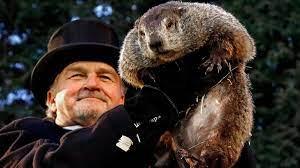
Facts about Groundhog's Day you may not know
Q9powersportsusa.com StaffShare
Groundhog's Day: Uncovering the Lesser-Known Facts
Groundhog's Day is a beloved holiday that has captured the imagination of people around the world. While most of us are familiar with the basic premise - a groundhog emerges from its burrow to predict the weather - there are many fascinating facts about Groundhog's Day that you may not know. Let's dive deeper into this quirky holiday and uncover some lesser-known facts.
The Origins of Groundhog's Day
The tradition of Groundhog's Day can be traced back to ancient European customs, particularly those of the Celts and the Romans. These cultures believed that the behavior of animals, especially those emerging from hibernation, could predict the arrival of spring.
The modern version of Groundhog's Day, however, originated from German immigrants who brought the custom of Candlemas Day to North America. According to folklore, if a hibernating animal casts a shadow on Candlemas, winter will last for another six weeks. This belief eventually became associated with the groundhog.
Punxsutawney Phil: The Weather-Predicting Groundhog
When it comes to Groundhog's Day, one groundhog stands above the rest - Punxsutawney Phil. Every year, on February 2nd, Phil emerges from his burrow in Punxsutawney, Pennsylvania, to predict whether there will be an early spring or six more weeks of winter.
Punxsutawney Phil has become an iconic figure, attracting thousands of visitors to the small town of Punxsutawney each year. He is cared for by a group of dedicated individuals known as the Inner Circle, who ensure that Phil is ready for his yearly appearance.
Despite his fame, Punxsutawney Phil's accuracy rate in predicting the weather is only around 39%. This means that he is wrong more often than he is right! Nevertheless, his predictions continue to captivate the public's attention and add a touch of whimsy to the winter season.
Groundhog's Day Celebrations
Groundhog's Day has been celebrated for over 130 years in Punxsutawney, Pennsylvania. The first official Groundhog's Day was held in 1887, making it one of the oldest and most enduring traditions in the United States.
However, Punxsutawney is not the only place where Groundhog's Day is celebrated. Other famous groundhogs across North America, such as Wiarton Willie in Canada and Staten Island Chuck in New York City, also make weather predictions on February 2nd.
In addition to the weather predictions, the town of Punxsutawney hosts a week-long festival to celebrate Groundhog's Day. The festival features parades, live music, food vendors, and various activities for visitors of all ages. It has become a major tourist attraction, drawing people from all over the world who want to experience the unique charm of this holiday.
Groundhog's Day in Pop Culture
Groundhog's Day has transcended its weather-predicting origins to become a cultural phenomenon. One of the main reasons for this is the 1993 comedy film 'Groundhog Day' starring Bill Murray. The movie tells the story of a weatherman who finds himself trapped in a time loop, reliving the same day (Groundhog's Day) over and over again. The film has since gained a cult following and has further popularized the holiday.
Groundhog's Day has also been referenced in various songs, television shows, and books, further cementing its place in popular culture.
Similar Traditions Around the World
While Groundhog's Day is predominantly celebrated in North America, similar traditions exist in other parts of the world. In Germany and Switzerland, people look to the badger to predict the weather on Candlemas Day. In France, it is the bear that takes on the role of weather prognosticator.
These traditions, with their roots in ancient folklore, highlight the universal fascination with nature's signs and the desire to predict the arrival of spring.
Groundhog's Day and Weather Forecasting
Groundhog's Day has always been associated with weather forecasting, albeit in a whimsical and lighthearted manner. While Punxsutawney Phil's predictions may not be scientifically accurate, they serve as a reminder that weather forecasting is a complex and ever-evolving field.
Modern weather forecasting relies on advanced technology, meteorological models, and data analysis to provide accurate predictions. Groundhog's Day, with its blend of folklore and fun, is a reminder of the human fascination with nature and our ongoing quest to understand and predict it.
Conclusion
Groundhog's Day is more than just a quirky holiday. It is a celebration of nature, folklore, and the enduring spirit of curiosity. Now armed with these lesser-known facts about Groundhog's Day, you can impress your friends and family with your newfound knowledge and appreciation for this beloved tradition.
